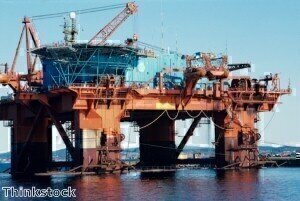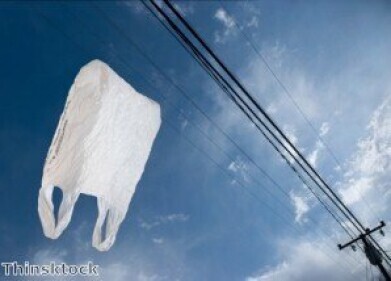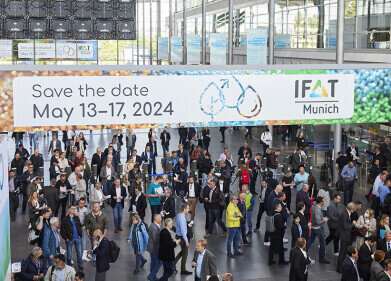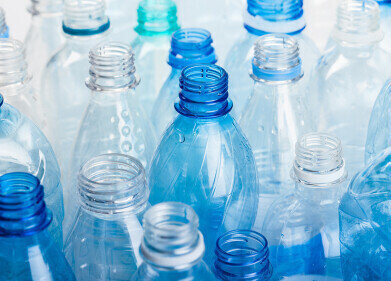Waste Management
Recycling Agricultural Film at a Top Quality Level
Jun 13 2013
In Champlon/Belgium, Soreplastic S.A. runs one of Europe's most advanced and powerful recycling plants for used agricultural film. Here, a custom optimised Power Universo 2800 single-shaft shredder from Lindner ReSource (Austria) and a 1716 TVEplus recycling extrusion line from Erema substantially contribute to the conversion of collected post-consumer film – often heavily soiled with foreign materials – into a re-granulate of the highest quality.
Recycling this soft, thin and typically highly contaminated agricultural film is a difficult and labourious process since the collected material does not lend itself easily to shredding, separation and cleaning. On the other hand, the plastics involved, such as PE-LD (lowdensity polyethylene) and PE-LLD (linear low-density polyethylene), are in keen demand, even in their recycled form, if the quality is right. Soreplastic invested a great deal of time in the choice of the proper machinery and equipment, recalls Vincent Sciascia, the company's Managing Director. "High throughput, low sensitivity to impurities, low wear
costs and constant high quality of the final product were our main criteria. In addition, we required extensive support from the machine builders – from advice in the project development phase through customising the machines for our purposes, but also in terms of local presence from the first start-up to the plant's trouble-free continuous operation. In the final analysis, Lindner ReSource and Erema convinced us in every respect."
Following the separator-based and manual removal of coarse foreign debris, a belt conveyor feeds the material first into the Power Universo 2800, a slow-running single-shaft shredder with a throughput capacity of 3 to 8 tons/h depending on the type of film being processed. Its large charging orifice facilitates loading even where films are large and bulky, as they tend to be at times. The machine's point blade rotor, measuring approx. 2,800 mm in length, is driven by two 132 kW electric motors. At a step less variable operating speed of around 100 r.p.m., the rotor – carrying 86 knives – draws in the film pieces particularly
effectively, uniformly and with low dust release. Interchangeable screens with 50 to 100 mm hole diameters allow perfect adaptation of the shredder to each specific film charge. At the end of this pre-shredding step, shreds measuring between 50 and 100 mm are obtained.
Harald Hoffmann, Managing Director at Lindner ReSource, comments: “The system uses a belt-type power transmission. Its so-called countershaft drive carries a large safety clutch (slip clutch) which limits the maximum torque input and thus makes the shredder particularly insensitive to coarse foreign matter. With the special kind of films being processed at Soreplastic, this is particularly important since we can never rule out that, e.g., metal parts will find their way into the shredder despite all the pre-sorting.”
Vincent Sciascia adds: “The modular design allowed us to adapt, our pre-shredder perfectly to the application on hand. Its inspection and maintenance hatch can be hydraulically opened inwards, giving spacious access to the rotor area. We can thus conveniently turn or replace the knives, each of which has 4 cutting edges, or any of the eight counterknife segments. Foreign debris, too, is easily removable this way. The screen basket can likewise be opened hydraulically so that we can clean or change the screen modules quickly. All this translates into short downtimes in day-to-day operation – a key pre-requisite
to cost efficiency.”
The resulting shredded film material then passes through a washing system followed by downstream wet grinding and drying. It is only after this treatment that the shred – now reduced to between 20 and 30 mm in size – are ready to enter the Erema 1716 TVEplus recycling extrusion line which, thanks to its special degassing technology, is capable of providing optimum melting, filtration and homogenisation of the washed stock despite its high initial moisture. Ultimately, the material is pelletised by an Erema HG 244 D type dieface pelletising unit featuring a special cutting geometry and automatic air-pressurisation of
the pelletising knife for maximum longevity. The overall system delivers an output capacity of approx. 1,400 kg/hr at a typical batch size of 2,500 kg.
Commissioned in November 2011, the plant has been running trouble-free and highly costefficient ever since. It currently provides Soreplastic with the capacity to recycle around 20,000 tons of input material per year. Sales of the resulting high-grade PE re-pellets are assured as well, Vincent Sciascia confirms. "Our standard portfolio ranges from PE-LD through PE-LLD to customer-specific blends. This makes us the only recycler capable of offering high-quality PE-LLD from washed agricultural stretch films for film blowing applications today."
Events
May 05 2024 Seville, Spain
May 13 2024 Munich, Germany
May 23 2024 Beijing, China
May 23 2024 Beijing, China
Jun 10 2024 Algiers, Algeria













